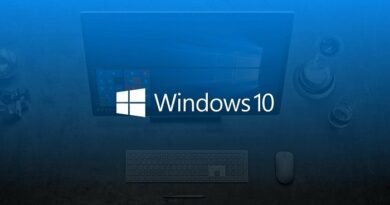Comprehensive Guide to Resolving Windows Error Code 0xc0000001
Table of Contents
Encountering the Windows Error Code 0xc0000001 can be a daunting experience for any user. This dreaded Blue Screen of Death (BSOD) error is typically associated with Boot Configuration Data (BCD) corruption or misconfiguration. However, this detailed guide will walk you through effective solutions to resolve this error on Windows 10 and Windows 11 systems.
Understanding the Root Causes of Error Code 0xc0000001
Before diving into the solutions, it’s crucial to understand the common causes of this error. These include:
- Corrupted BCD Data: Essential for the operating system’s startup, BCD errors can lead to this issue.
- Misconfigured BCD: Incorrect BCD settings can prevent Windows from booting correctly.
- Faulty Boot Drive: Physical damage or corruption in the boot drive can trigger this error.
- Malware Attacks: Viruses and malware can compromise system files, including those required for startup.
- Improper Shutdowns: Abrupt power loss or forceful shutdowns can corrupt the file system, affecting the boot process.
Preparing for Error Resolution
In most cases, your system will automatically enter the Windows Recovery Environment (WinRE) when encountering this error. If it doesn’t, you’ll need to create Windows installation media. Follow these steps:
- Download the Media Creation Tool from the official Microsoft website.
- Run the tool, select “Create installation media for another PC,” and follow the prompts.

- Insert the media into the affected computer and access the BIOS/UEFI settings.
- Set the boot priority to the USB drive or DVD.
Effective Solutions to Fix Error Code 0xc0000001
Here are six proven methods to resolve this error:
Option A: Utilize Startup Repair
Startup Repair is a built-in Windows tool designed to fix startup issues:
- Boot from the installation media and select “Repair your computer”.
- Navigate to Troubleshoot > Advanced options > Startup Repair.

Option B: Use 4DDiG Windows Boot Genius
This third-party tool is effective for repairing BSOD and other boot errors:
- Install 4DDiG Windows Boot Genius on another computer.
- Create bootable media and insert it into the affected computer.
- Boot from this media and use the Automated Repair function.

Option C: Command Prompt Repairs
For more advanced users:
- Boot from installation media and select Command Prompt under Troubleshoot.
- Use commands like
bootrec /rebuildbcd,bootrec /fixmbr, andbootrec /fixboot. - Run
sfc /scannowto repair Windows system files.

Option D: Fix Disk Errors with CHKDSK
This tool checks for and repairs disk errors:
- Open Command Prompt from WinRE.
- Run
chkdsk C: /f /r(replace C: with the appropriate drive letter).
Option E: Restore from a System Restore Point
If you have a system restore point set before the error occurred:
- Access System Restore from the Advanced Boot Options.
- Choose an appropriate restore point.

Option F: Reset Your PC
As a last resort:
- Navigate to Troubleshoot > Reset this PC.
- Choose to keep or remove files and follow the on-screen instructions.

Preventative Measures to Avoid Future Errors
Prevention is key. Here are some tips:
- Keep Windows updated with the latest patches.
- Perform regular system maintenance, like disk cleanup and defragmentation.
- Conduct regular malware scans.
- Implement a robust backup strategy.
- Avoid abrupt shutdowns and check for BIOS/UEFI firmware updates.
- Monitor and maintain your hardware health.
Implementing these solutions and preventative measures will significantly reduce the likelihood of encountering Windows Error Code 0xc0000001. With this comprehensive guide, you can confidently tackle this issue and maintain a healthy, functioning system.
What is the Windows Error Code 0xc0000001?
The Windows Error Code 0xc0000001 is a Blue Screen of Death (BSOD) error that typically occurs during the startup process of Windows 10 or 11. It is often caused by issues related to Boot Configuration Data (BCD) such as corruption, misconfiguration, or other system issues like faulty boot drives and malware.
How can I prepare my system for fixing the Error Code 0xc0000001?
You may need to enter the Windows Recovery Environment (WinRE) to prepare your system. If your system doesn’t automatically enter WinRE, create Windows installation media using the Media Creation Tool from Microsoft’s website. Boot your system using this media and then access the BIOS or UEFI settings to set the boot priority to the USB drive or DVD.
What are some common causes of Error Code 0xc0000001?
Common causes of this error include corrupted or misconfigured Boot Configuration Data (BCD), physical damage or corruption in the boot drive, malware attacks targeting system files, and improper system shutdowns leading to file system errors.
Can the Startup Repair tool fix the Error Code 0xc0000001?
Yes, the Startup Repair tool is a built-in utility in Windows that can resolve startup issues and system file errors, making it an effective option for fixing Error Code 0xc0000001.
Is there a third-party tool recommended for fixing Error Code 0xc0000001?
Yes, 4DDiG Windows Boot Genius is a recommended third-party tool. It provides a comprehensive suite of tools for repairing BSOD and other Windows boot errors, creating bootable media, and recovering data from non-bootable hard drives.
How can the Command Prompt be used to fix this error?
The Command Prompt can be used to run several commands that can fix Error Code 0xc0000001. These include bootrec /rebuildbcd, bootrec /fixmbr, bootrec /fixboot, and sfc /scannow to repair Boot Configuration Data and Windows system files.
What does the CHKDSK command do in resolving this error?
The CHKDSK command checks for and repairs disk errors, such as bad sectors, which can be a cause of the Error Code 0xc0000001. Running chkdsk with appropriate parameters can help fix disk-related issues.
Is resetting the PC a viable solution for Error Code 0xc0000001?
Resetting the PC is a viable solution, especially if other methods fail. This process restores the computer to its original state, removing all installed programs and user data. It’s a drastic solution but can be effective in resolving the error.
How can Error Code 0xc0000001 be prevented in the future?
To prevent this error, keep your system updated with the latest Windows updates and security patches, perform regular maintenance tasks, scan for malware, implement a regular backup strategy, avoid forceful shutdowns, and regularly check and update the BIOS/UEFI firmware. Additionally, keep your hardware in check and consider upgrades if necessary.
In conclusion
The Windows Error Code 0xc0000001 is a challenging but manageable issue that affects Windows 10 and 11 systems. This Blue Screen of Death error, often stemming from Boot Configuration Data problems, can be addressed through various solutions. Preparing your system by accessing the Windows Recovery Environment or using installation media is the first critical step. Solutions range from using built-in Windows tools like Startup Repair and Command Prompt commands to third-party software like 4DDiG Windows Boot Genius. The CHKDSK command and system reset options also provide viable pathways to resolve this error. Importantly, preventative measures such as regular system updates, maintenance, malware scanning, and proper shutdown procedures are crucial in avoiding such errors in the future. By understanding and applying these solutions and preventive strategies, users can effectively manage and prevent the occurrence of the Windows Error Code 0xc0000001, ensuring a stable and efficient operating system experience.


